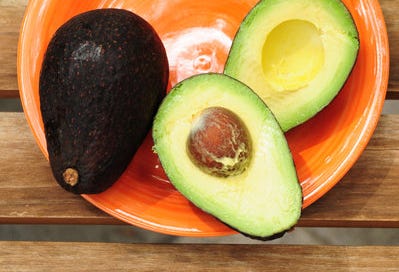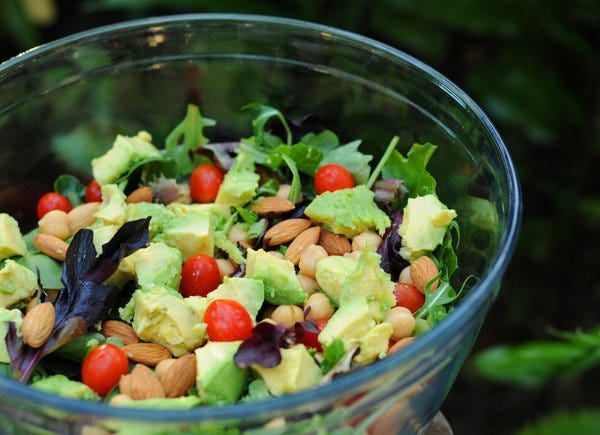Avocadoes in India
The story of a bland fruit becoming more popular among people fond of sweet fruits
American missionaries introduced the avocado to India a century ago but failed to popularize it among Indians who were not impressed with the fruit’s blandness. One of the earliest Indian places to have avocado trees was the Indian Institute of Horticultural Research (IIHR) at Hessarghatta, Bangalore, from where the institute authorities subsequently removed the trees. However, avocadoes had spread from IIHR to places nearby Bangalore, with growers using the tree’s seeds to propagate it.
American missionaries continued bringing avocado trees into India during the first half of the twentieth century and introduced them at Coorg, Ooty, Kodaikanal, Palani, and other south Indian hilly areas suitable for their cultivation. As a result of the early foray of the fruit in the southern states, in 2021, most Indian avocado growers are in Tamil Nadu, Kerala, and Karnataka. In addition, growers in Maharashtra in the Nashik region have also cultivated avocadoes.
Growers in avocadoes also grow it at Sikkim. Among the other northeastern states, at Mizoram, locals brought the fruit from Myanmar. They cultivated it and spread it to other neighboring states, with Manipur being a big grower of the fruit now. Growers in Himachal Pradesh and Punjab have also attempted to grow avocado. However, the fruit does not tolerate frost with tropical and sub-tropical climates with no dry heat favoring its growth. Thus, three south Indian states and Maharashtra remain the best places in India to grow avocadoes and manage logistics to deliver the fruit across the country.
Avocadoes are not sweet but creamy from the fat in them and the only fruits in the world with no sweetness or flavor. Indians named bland avocadoes butter fruits due to the creamy taste, and the fruit’s name in local languages also translates to butter fruit.
Globally, people eat avocadoes raw as cooking makes them bitter. However, Mexican guacamole is among the most popular avocado dishes, and the fruit’s origin in Mexico makes that country’s cuisine have numerous avocado dishes. You can mash, cube, slice, puree, or halve and stuff avocado or add avocado slices to sandwiches or salads or mash it with lime juice, onion, tomato, cilantro, salt, and other spices to make guacamole.
Storing unripe avocadoes with bananas and mangoes ripens them through the ethylene that the latter fruits generate. You can also ripen avocadoes by keeping them in raw rice.
Avocado has the highest energy value of any fruit at 245 calories in 100 g. with most of those calories from proteins and fats and a few from carbohydrates. It is also rich in dietary fiber and is known for being a good source of monounsaturated fat, second only to olives among fruits in oil content. The fruit is also a source of potassium and vitamins B, C, E, and K.
The Hass variety has 18% fat, whereas the Indian green skin variety has s 12% fat which creates a different mouth feel when you eat either one. In addition, Haas avocadoes have rough leathery skin, whereas the smooth-skinned varieties have a glossy coat.
Eating avocado is good for the heart, vision, digestion as a fiber source, and people wanting to lose weight favor the fruit.
Imported Haas avocadoes cost thrice the price of the local avocadoes, most of which South Indian farmers grow. Avocados cost one hundred to two thousand rupees a kilogram in India, with the more expensive fruit being part of the thousand metric tons of avocadoes India imports annually.
Some years ago, lottery ticket shops that had to close due to a ban on lotteries by the Tamil Nadu government switched to becoming fruit juice shops that favored avocadoes for milkshakes.
Tamil Nadu is a leading avocado grower, with cooler places like Kodaikanal and Ooty generating plentiful avocadoes each year. India is one of the few places where trees generate avocadoes for eight months through two crops. At Chennai, you will easily find avocado milkshakes among the menu items of fruit juice stalls.
The information technology (IT) boom at Bangalore heightened interest in avocado among techies, with the city now consuming ten thousand tons of avocadoes annually. Like in Tamil Nadu, you can easily find avocado milkshakes at fruit juice stalls in Bangalore also.
Interest in fitness and healthy diets have sparked the latest Indian attraction in avocadoes. You can now find them in menus across Indian cities and the raw fruit at gourmet food stores. However, the lack of a consistent crop supply makes India import avocadoes though the country has a suitable climate to grow locally. Most of India's fruit imports are the Haas variety with black leathery skin and a higher fat percentage, making it creamy.
Most avocado growers in rural India with few trees harvest the fruit mostly for home consumption and distribution locally and do not attempt marketing it for sale in cities.
City fruit and vegetable markets are a good indicator of what consumers prefer. But, unfortunately, very few of them have stores displaying or selling avocadoes. Thus, India’s biggest challenge in commercially developing avocadoes is in the absence of commercial orchards.
Growers at Tamil Nadu (TN) have partly addressed the shortage of significant avocado quantities by growing it as a shade tree in coffee estates where they traditionally chose silver oak. As a result, TN avocado growers are among the happiest and prosperous growers. Moreover, the fruit generates handsome income each year through the growing interest in the fruit in south Indian cities, resulting in an annually growing demand.
At Thane, only gourmet stores like Nature’s Basket sell local and foreign avocadoes pricing the fruit exorbitantly. Mexico, Peru, and the Dominican Republic are big international avocado grower-exporters with no competition from India. More Indian avocado growers will grow the fruit in the twenty-first century and cater to the local and international demand.
Indian avocado trees are from one of the three landraces of the Mexican, West Indian, or Guatemalan species. A very encouraging development for avocado in India is developing the TKD-1 variety by the Horticultural Research Station, Thadiyankudisai of the Tamil Nadu Agricultural University, and the CHES A-1 variety by the Central Horticultural Experiment Station of the IIHR at Chettalli.
May the TKD-1 and CHES A-1 avocadoes spread across India and become harbingers of India’s evolution as a leading avocado grower and exporter.
Thank you for reading this issue of our newsletter, which I started in March 2019. On July 27, 2020, we launched Life at Urbania book, compiling the 2019-20 Times of Urbnia issues.
On the first anniversary of its publication, you can buy Life at Urbania at an INR 99 discount using the coupon code ONEYEAR.





Very useful details. Thanks